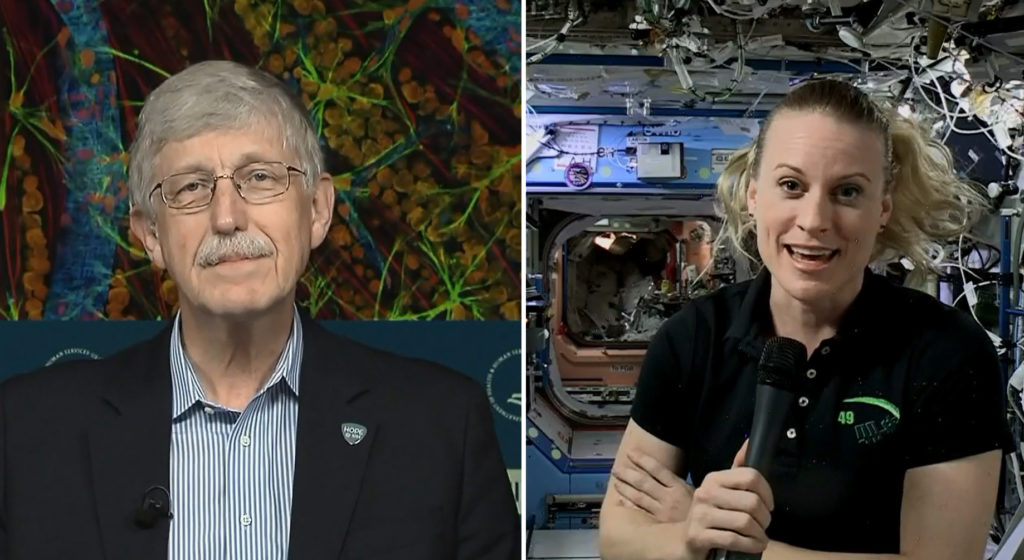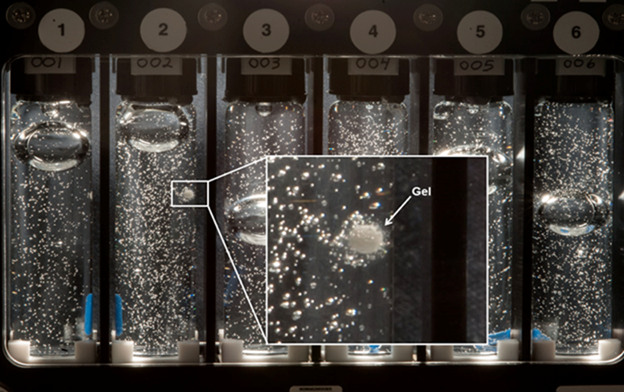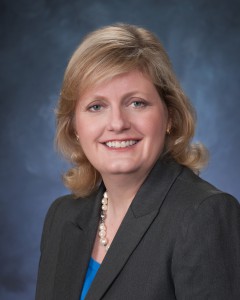
Dr. Francis Collins led the effort to map the human genome here on Earth, and he recently spoke with Kate Rubins, the first person to sequence DNA in space, as she floated aboard Earth’s only orbiting laboratory. Collins, the director of the National Institutes of Health, connected with Rubins in a downlink that was live-streamed on the International Space Station’s Facebook page, and the pair of scientists discussed advances in microgravity research. Here are some of the highlights from their conversation, and a link to a video of the entire event below.
Rubins discussed the recent sequencing of DNA as part of the Biomolecule Sequencer investigation.
"This was truly an experiment in all senses of the word. We did not know if it was going to work." #AstroKate on DNA sequencing. #SpaceChat pic.twitter.com/wHKMZVpzgp
— ISS Research (@ISS_Research) October 18, 2016
Collins pointed out that the MinION device Rubins used to sequence DNA in space is much smaller than similar tools used on Earth.
"We need to get machines to be compact, portable, robust, independent of much power generation." #AstroKate on device used to sequence DNA. pic.twitter.com/QsTQIQuGSc
— ISS Research (@ISS_Research) October 18, 2016
Rubins shared how DNA sequencing might be used in future deep-space mission.
#AstroKate describes how DNA sequencing could be used in future space travel. #SpaceChat #genomics pic.twitter.com/I9CStWtC9n
— ISS Research (@ISS_Research) October 18, 2016
Rubins also highlighted how the space station serves as a test bed for troubleshooting technologies needed to advance human space exploration.
#AstroKate describes how @ISS_Research is helping us troubleshoot technologies for future deep-space missions. #SpaceChat pic.twitter.com/Azr55oiQdX
— ISS Research (@ISS_Research) October 18, 2016
Is it possible to get the flu in space? Rubins shared how crew members stay healthy aboard the space station.
Is it possible to get the flu on the @Space_Station? #AstroKate shares how crew members stay healthy. #SpaceChat pic.twitter.com/Xh9ZxwcZcp
— ISS Research (@ISS_Research) October 18, 2016
Rubins and Collins also discussed the how the unique environment of the orbiting laboratory serves as the perfect place to study and develop countermeasures for deep-space exploration.
What can we learn about the effects of radiation on humans in space? #AstroKate discusses with #NIHDirector during #SpaceChat pic.twitter.com/1yZP30mMVQ
— ISS Research (@ISS_Research) October 18, 2016
Rubins is a microbiologist with a vast background in virology and research, so it wasn’t surprising to learn that some of the personal items she brought were extra tools to help her conduct science in her spare time.
What laboratory tool did microbiologist #AstroKate pack in her personal allotment to @Space_Station & how has @ISS_Research surprised her? pic.twitter.com/hCBisvFMhY
— ISS Research (@ISS_Research) October 18, 2016
Rubins and Collins wrapped up their conversation with advice for young people who are interested in science and improving the world around them.
#AstroKate & @NIHDirector's advice to young people: stay fascinated & passionate. It's a great time to be in #science and #STEM careers! pic.twitter.com/FRS44hLJHZ
— ISS Research (@ISS_Research) October 18, 2016
NIH has sponsored many investigations aboard the space station, including T-Cell Activation in Aging, OsteoOmics, Osteo-4, and a recently announced funding opportunity for Tissue Chips in Space. Additionally, NIH has funded work on the Nell-1 molecule for rebuilding bone that will also be used in the RR-5 mission.
View the entire interview here:
https://www.youtube.com/watch?v=https://www.youtube.com/watch?v=QYaYMo2XrAY[/embedyt]


